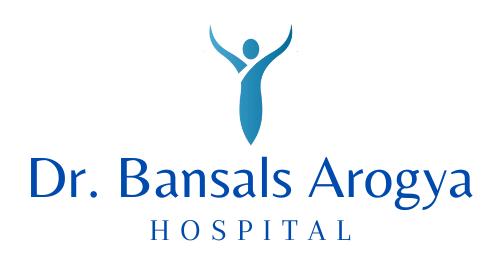Syndromic Disorders
Medical Laboratory And Specialists Services
Introduction
The intricate relationship between the nervous system and the musculoskeletal system is evident in various syndromes and neurological conditions that are associated with orthopaedic disorders. These conditions can affect individuals of all ages and have a profound impact on their physical and functional abilities.
Syndromes and neurological conditions encompass a wide range of disorders, each with its own unique characteristics and challenges. These conditions often affect the central nervous system, which includes the brain and spinal cord and can manifest in a multitude of ways, impacting muscle function, motor skills, and coordination.
Orthopaedic disorders that are associated with syndromes and neurological conditions often
involve issues such as joint contractures, muscle imbalances, deformities, and compromised
mobility. These orthopaedic complications are a result of the underlying neurological issues
that affect muscle control and coordination. They can manifest in various ways, from skeleta deformities to gait abnormalities, causing discomfort and impairing an individual’s ability to perform daily activities.
Here, we will explore five prominent examples: Arthrogryposis Multiplex Congenita, Cerebral
Palsy, Spinal Muscular Atrophy, Duchenne Muscular Dystrophy, and Spina Bifida.
1. Arthrogryposis Multiplex Congenita
Arthrogryposis Multiplex Congenita (AMC) is a rare condition characterized by multiple joint
contractures present at birth. These contractures can affect any joint in the body, and the severity varies from person to person. The primary cause of AMC is disrupted fetal development. It can result from neurological abnormalities, such as improper muscle innervation or impaired motor neuron development, leading to limited joint movement and muscle atrophy.
Non-Surgical Treatments:
These often begin with physical therapy and range-of-motion exercises to increase joint flexibility. Orthotic devices like splints or braces can help maintain proper alignment and support mobility. Occupational therapy may be used to improve the child’s ability to perform daily tasks.
Surgical Treatments:
In severe cases, surgical interventions may be necessary. These can include joint releases, tendon transfers, or osteotomies (bone cuts) to correct deformities. The specific surgical approach depends on the location and severity of contractures and deformities.
2. Cerebral Palsy
Cerebral Palsy (CP) is a group of lifelong neurological disorders that affect movement, posture, and muscle coordination. CP results from damage to the developing brain, often occurring before or during birth. The neurological abnormalities in CP can lead to orthopaedic issues such as muscle spasticity, contractures, and bone deformities.
Non-Surgical Treatments:
Physical therapy is a cornerstone of CP management, focusing on improving muscle strength and coordination. Orthotic devices, such as ankle-foot orthoses (AFOs), help maintain proper alignment and gait. Specialized shoes or casts may be used. Botox injections can temporarily reduce muscle spasticity
Surgical Treatments:
Surgical interventions are considered when non-surgical methods are insufficient. Tendon lengthening, muscle transfers, or osteotomies can be performed to improve joint function and gait. In some cases, selective dorsal rhizotomy (SDR) may be recommended to reduce spasticity.
3. Spinal Muscular Atrophy
Spinal Muscular Atrophy (SMA) is a genetic neuromuscular disorder characterized by the degeneration of motor neurons in the spinal cord, leading to muscle weakness and atrophy. The orthopaedic implications of SMA primarily involve muscle imbalance, scoliosis, and joint
deformities.
Non-Surgical Treatments:
Physical therapy and stretching exercises help maintain joint mobility and muscle function. Orthotic devices, such as ankle-foot orthoses (AFOs), are commonly used to support proper foot alignment and improve stability.
Surgical Treatments:
Surgical procedures may be needed to address severe contractures, such as joint releases or tendon transfers. In advanced cases, spinal surgery may be considered to correct spinal deformities and improve respiratory function.
4. Duchenne Muscular Dystrophy
Duchenne Muscular Dystrophy (DMD) is a genetic disorder characterized by the progressive degeneration of muscle tissue. This condition is caused by mutations in the dystrophin gene
and results in muscle weakness, contractures, and orthopaedic complications.
Non-Surgical Treatments:
Physical therapy aims to maintain muscle strength and flexibility. The use of orthotic devices, including AFOs and orthopaedic shoes, helps support ambulation and posture. Steroid therapy may slow down muscle degeneration.
Surgical Treatments:
Surgical options often include procedures to correct foot deformities or tendon transfers to enhance foot and ankle control. Additionally, spinal fusion surgery may be considered to manage scoliosis and maintain respiratory function.
5. Spina Bifida
Spina Bifida is a congenital neural tube defect that occurs when the spine and spinal cord do not develop properly during fetal development. This condition can result in various orthopaedic issues, including lower limb paralysis, scoliosis, and joint contractures.
Non-Surgical Treatments:
Physical therapy helps improve muscle strength and mobility. Orthotic devices like AFOs and specialized footwear are used to support proper alignment. Hydrotherapy can be beneficial in some cases, providing buoyancy and resistance for therapy.
Surgical Treatments:
Surgical interventions may be necessary to address clubfoot deformities, manage scoliosis, or release joint contractures. In more severe cases, spinal surgeries are performed to correct neural tube defects and spinal cord issues.
